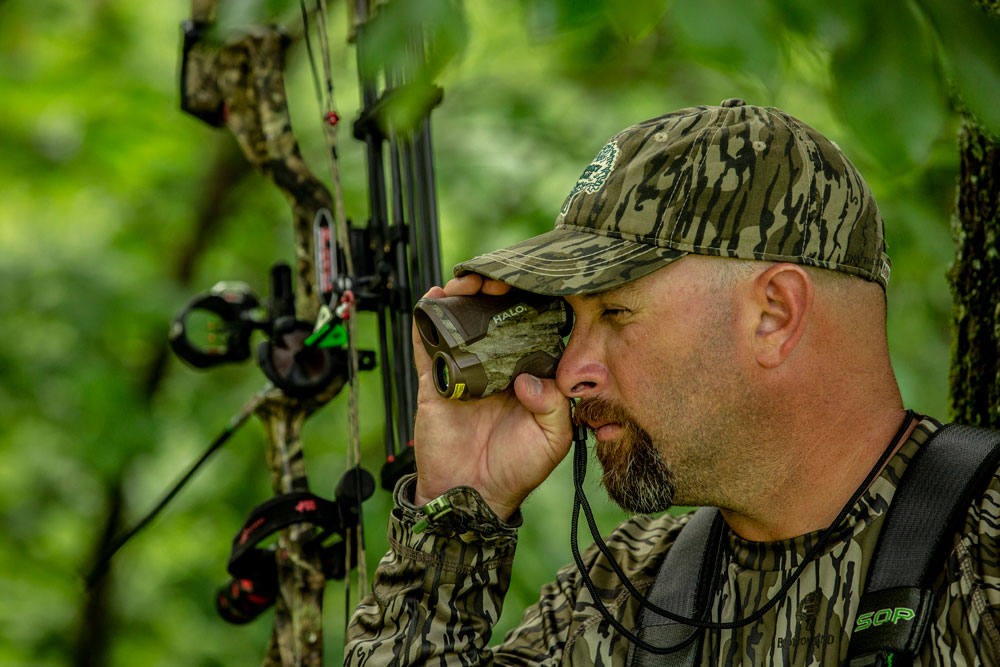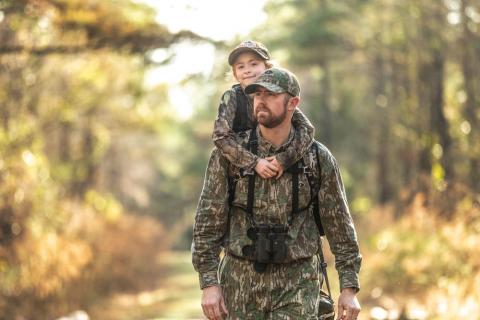
A rangefinder is one of the most important tools a hunter has to help make each hunt successful. Getting a distance reading is one of the last things on a hunter’s mind before the shot is made. That’s why it is critical to implement the following tips to make certain that your rangefinder will be in the best working order on every hunt.
1. Extra Batteries
Hunters work too hard and put in too much time to set themselves up for success. There are a few minor steps to avoid major consequences in the field. One of those steps is to always pack an extra rangefinder battery. For as small as batteries are and considering the role they play, carrying an extra rangefinder battery on every hunt is a must.
2. Angle Compensation
Angle compensation is an incredible feature that eliminates a large amount of guess work. Whether shooting uphill or downhill, a rangefinder with angle compensation will reveal the distance to shoot the shot for, instead of the straight-line distance. The distance revealed by a rangefinder with angle compensation is vital for gun hunters and bow hunters, alike. When purchasing a rangefinder, always get one with angle compensation.
3. Waterproof
Mother Nature will always show hunters who is in charge with her capability of producing unpredictable and diverse weather conditions. It is important to have a rangefinder that is built for any conditions, whether they are hot, cold, dry or wet.
4. Use Scan Mode
Scan Mode is the feature for a rangefinder to continuously provide distances to hunters without the hunter having to intermittently push the button. Scan mode allows hunters to press and hold the range button and quickly read ongoing distance measurements. Scan mode is an important feature to look for when purchasing a rangefinder.
5. Know Your Equipment
Like with any tool, it is important to become familiar with every piece of gear being used during a hunt. One rangefinder may provide a different number for the same target. Lighting and the texture of the target can affect all rangefinders differently. These variances make it crucial to know how your rangefinder performs in different situations and when ranging different targets.
6. Take Rangefinder to Rifle Range
Not all rangefinders are created equal. In fact, none of them are. Anytime you visit an archery or rifle range, be sure to take your rangefinder along. What may have been measured as 100 yards by someone ten years ago, may not be what your rangefinder claims to be 100 yards. You are shooting your gun or bow at your rangefinder’s measurements. The measurements someone else took with a different rangefinder, will rarely reflect identical numbers to your device.
7. Pre-Range Spots
One of the best times to use a rangefinder during a hunt is when there aren’t any animals around and you can take time to pre-range various targets. It is a great idea to anticipate where your targets may present you with your ideal shot and know the distance prior to the animal’s arrival. This will eliminate the movement required to range the animal upon its arrival, minimizing the chance of spooking it.
8. Where to put Rangefinders While Hunting
Rangefinders may be required at any moment of any hunt. Hunters never know when their target animal may surprise them and show up early. That’s why it’s important to have your rangefinder placed where it can be grabbed quickly and easily, with minimal movement.
9. Eyeball Test
Knowing how to judge yardage with your own eyes is a priceless skill that can be continuously improved with the help of a rangefinder. Things can go wrong and you may forget you’re rangefinder a time or two. In the off-season, make it a point to use your rangefinder to judge distance as often as possible, so if you ever find yourself in a situation where you don’t have the rangefinder on hand, you’re still able to give yourself a chance at making a great shot.
10. Watch out for Misreads
As with any technology device being used by humans, things can go wrong. It is important to assess distances being revealed by rangefinders and make sure that they aren’t too out of line, or that you’re not picking up a different target the may be in front of or behind your preferred target. For example, a bush at 34 yards may obstruct your rangefinder’s ability to pick up the deer beyond that bush at 42 yards. It is important to consistently practice judging distances with your rangefinder, so when the moment of truth presents itself, you may identify and potential user or rangefinder errors before making your shot.






























